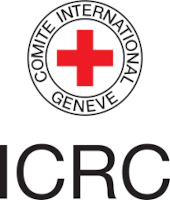Knowledge fuels change
For over a decade, Energypedia has shared free, reliable energy expertise with the world.
We’re now facing a serious funding gap.
Help keep this platform alive — your donation, big or small, truly matters!
Thank you for your support
SPIS Irrigate

Module Aim and Orientation
Irrigation is an important means to improving agricultural productivity, but in many developing countries, the potential for irrigated agriculture has not been realized. While irrigation bears obvious benefits, it is not without substantial impact on the environment (and by extension societies and economies dependent on this environment). Numerous technologies and approaches have therefore been developed to minimize the negative environmental and socio-economic effects. This IRRIGATE Module provides an introduction to the complexities surrounding irrigation. It is part of the Toolbox on Solar Powered Irrigation Systems (SPIS) (GIZ FAO, 2017), which comprises further modules and complementary tools relevant to informed decision making around SPIS. read more
Furthermore this module is supplemented by two Excel-based tools:
- IRRIGATE – Soil Tool for determining an appropriate irrigation schedule for selected crops and calculate water storage capacities
- PROMOTE & INITIATE – Impact Assessment Tool for reviewing and weighing socio-economic and environmental impacts of an SPIS project
Chapters
1. Introduction
2. Understand water resources
3. Assess environmental and socio-economic impacts
4. Calculate water requirements
5. Select field irrigation method
6. Plan intake structures, conveyance and distribution
7. Irrigation efficiency tips
Supplementary Tools
- IRRIGATE – Soil Tool
- Watch the instruction video here to learn more!
- Watch the instruction video here to learn more!
Further Readings
- Allen, R. 1998. “Crop Evapotranspiration”. FAO Irrigation and Drainage Paper No. 56. Rome: Food and Agriculture Organization of the United Nations (FAO).
- FAO. 2016. AQUASTAT website. Food and Agriculture Organization of the United Nations (FAO). Website accessed on 27/03/2018.
read more
- Berbel, J. & Mateos, L., 2014. "Does investment in irrigation technology necessarily generate rebound effects? A simulation analysis based on an agro-economic model," Agricultural Systems, Elsevier, Vol. 128, pg 25-34
- FAO. 2016. Water accounting and auditing: A sourcebook. Rome: Food and Agriculture Organization.
- FAO. 2016b. Exploring the Concept of Water Tenure. Rome: Food and Agriculture Organization of the United Nations (FAO).
- FAO. 2013. Multiple uses of water services in large irrigation systems. Rome: Food and Agriculture Organization of the United Nations (FAO).
- FAO. 2012. Voluntary Guidelines on the Responsible Governance of Tenure of Land, Fisheries and Forests in the context of national food security. Rome: Food and Agriculture Organization of the United Nations (FAO).
- FAO. 2011. The state of the world’s land and water resources for food and agriculture (SOLAW) – Managing systems at risk. Rome: Food and Agriculture Organization of the United Nations and London, Earthscan.
- FAO. 2007. Modernizing irrigation management – the MASSCOTE approach. Rome: Food and Agriculture Organization of the United Nations (FAO).
- FAO. 2006. Plant nutrition for food security: A guide for integrated nutrient management. Rome: Fertiliser and Plant Nutrition Bulletin Nr. 16.
- Faurès, J.-M., Svendsen, M. & Turral, H. 2007. Re-inventing irrigation. In: D. Molden (editor). Water for Food, Water for Life: A Comprehensive Assessment of Water Management in Agriculture. Earthscan, London, UK, and International Water
- Management Institute, Colombo, Sri Lanka.HR. Hudson. 2005. Sustainable Drainage Management. New Zealand Water Environment Research Foundation. http://www.wet.org.nz/wp-content/uploads/2012/03/fieldguide_final.pdf
- Moriarty, P. et al. 2007. The EMPOWERS Approach to Water Governance: Guidelines, Methods and Tools. http://waterwiki.net/images/d/d2/EMPOWERS_Guidelines,_Methods_and_Tools.pdf
- Narayanamoorthy, A. 2004. “Impact Assessment of Drip Irrigation in India: The Case of Sugarcane”, Development Policy Review, Vol. 22, No.4, pp. 443-462.
- Rijsberman, Frank. 2006. “Water Scarcity: Fact or Fiction?” Agricultural Water Management, Vol 80, No. 1-3, pg. 5-22.
- Salinity Management Handbook 2011. Queensland Government, Australia. https://publications.qld.gov.au/storage/f/2013-12-19T04:10:23.754Z/salinity-management-handbook.pdf
- Savv AP, Frenken K. 2002. Irrigation manual planning, development, monitoring and evaluation of irrigated agriculture with farmer participation. Vol. I, Modules 1-6.
- Sustainable Agriculture Information Initiative. 2010. Technical Manual – Soil and Water Conservation. https://wocatpedia.net/images/1/18/Technical_Manual-_Soil_and_Water_Conservation.pdf
- Sustainable Agriculture Information Initiative. 2010. Technical Manual – Conservation Agriculture. http://www.fao.org/ag/ca/CA-Publications/Technical_Manual_Conservation_Agriculture.pdf
- Walker, W.R. 2003. Surface irrigation simulation evaluation and design. Guide and technical documentation. Logan: Utah State University. http://ocw.usu.edu/biological_and_irrigation_engineering/surface_irrigation_design/sirmod_iii_manual.pdf
- Water Accounting: http://wateraccounting.org/
- WOCAT Global Database on Sustainable Land Management: https://qcat.wocat.net/en/wocat/



















